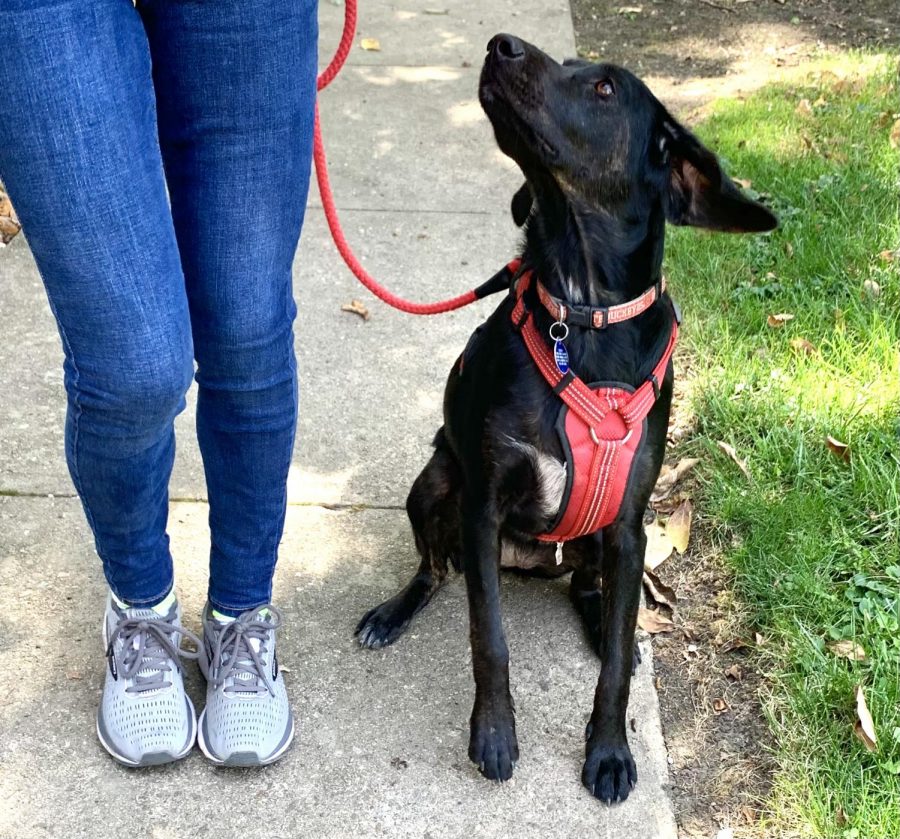Positive reinforcement training is the way to go
POSITIVE REINFORCEMENT. Getting a puppy companion during the pandemic has been a trend, and many puppies have been able to find amazing new homes. This begs the question: What is the best way to train these new pups? Positive reinforcement has many benefits! To learn more about why positive reinforcement is becoming the preferred method among dog trainers and how to use it with your own dog, click the link in bio.
Getting a puppy companion during the pandemic has been a bit of a trend. Last December, my family and I got our own puppy and have been training her, even more than usual with the extra time spent at home. And we are not the only ones!
According to an article published last month by the Washington Post, adoption rates doubled at a shelter in Los Angeles, leading to the need for a waiting list for certain dog breeds and puppies. Acquiring a new pet is the easy part; training is where the real work begins for a pet owner.
Recently, many professional trainers and everyday dog owners prefer to train with positive reinforcement training methods. Positive reinforcement stems from learning and operant conditioning theories. These behavioral theories include two concepts: positive reinforcement or negative reinforcement. Positive reinforcement involves the adding of something that the subject finds appealing to increase a desired behavior. Negative reinforcement involves the removal of something aversive to increase a desired behavior. In dog training, giving your dog a treat for sitting at your request is an example of using positive reinforcement, because you are doing an action to reinforce a desired behavior (i.e., sitting). An example of negative reinforcement for your dog is using a choke collar to encourage your dog not to pull on a leash when walking. As your dog stops pulling, the choke collar eases pressure on your dog’s neck, therefore removing something aversive (i.e., the feeling of choking) which reinforces the desired behavior (i.e., walking at your side without pulling ahead). In behavioral theories, there are also the concepts of positive punishment and negative punishment. Positive punishment is doing an action to discourage a behavior, like scolding your dog for doing something undesirable. Negative punishment is discouraging a behavior through the removal of something, such as taking away a favorite toy if your dog is doing something undesirable.
A study published last year in BioRxiv evaluated the short and long term effects of aversive training methods (shock-collars for instance) and reward-based training methods on dogs. The researchers examined the frequency of stress-related behaviors in dogs, like yawning or licking, and the cortisol levels (a stress hormone) in the dogs’ saliva at baseline prior to training and again after training sessions to test short term effects. The dogs trained with aversive methods displayed more stress-related behaviors and showed higher levels of cortisol after training (meaning they were more stressed) than the dogs receiving rewards-based training. These findings carried over beyond a single training session. For this reason, rewards-based training seems to be the way to go, and many handlers are making the switch from aversive methods toward positive reinforcement methods.
Handlers with the organization Guide Dogs for the Blind have moved almost completely away from negative reinforcement training in recent years, according to an article by TIME. “A new dog can now be ready to guide its owner in half the time it once took, and [the dog] can remain with an owner for an extra year or two, because they’re so much less stressed out by the job,” the organization’s vice president of client, training and veterinary operations, Susan Armstrong, told TIME.
Dogs trained with positive reinforcement are less stressed and presumably happier than dogs trained with negative reinforcement and positive punishment, previously regarded to be the superior method.
A question some people might wonder about using positive reinforcement training is what to do when their dog demonstrates an undesirable behavior. With positive reinforcement methods, proponents of this approach suggest redirecting the dog. For instance, sometimes my dog barks at one of my family members because she is bored and wants to play. Following negative punishment methods, I would need to ignore my barking dog and withdraw my attention in hope that she stops barking because there is no reward for continuing to bark. Instead of doing this, however, I follow positive reinforcement methods, telling her to retrieve one of her toys, redirecting her from the negative behavior of barking towards the positive behavior of grabbing a toy. Then I reward the toy retrieval by playing with her, which is just as good of a reward as is a treat!
Overall, positive reinforcement training leads to a better dog-owner relationship, happier, less stressed dogs, and optimal, faster learning. Negative reinforcement and punishment is a thing of the past—positivity is the new trend (and it feels much better as the owner too!)












